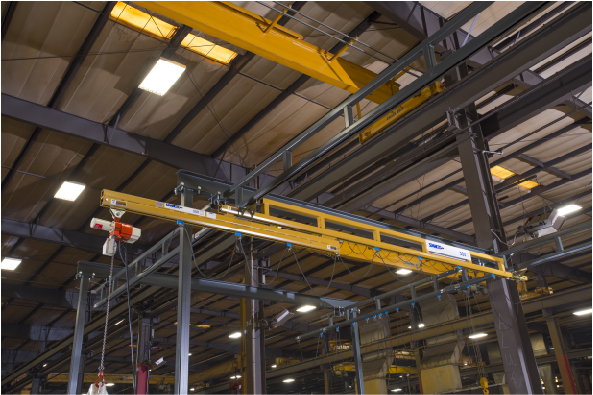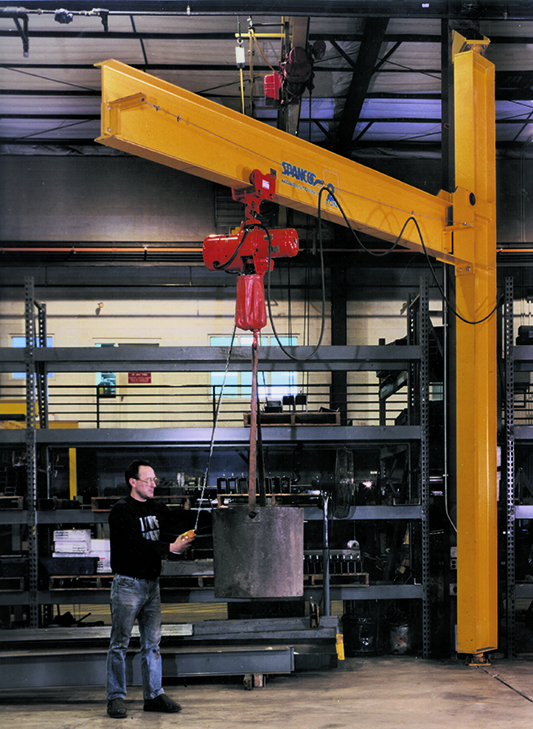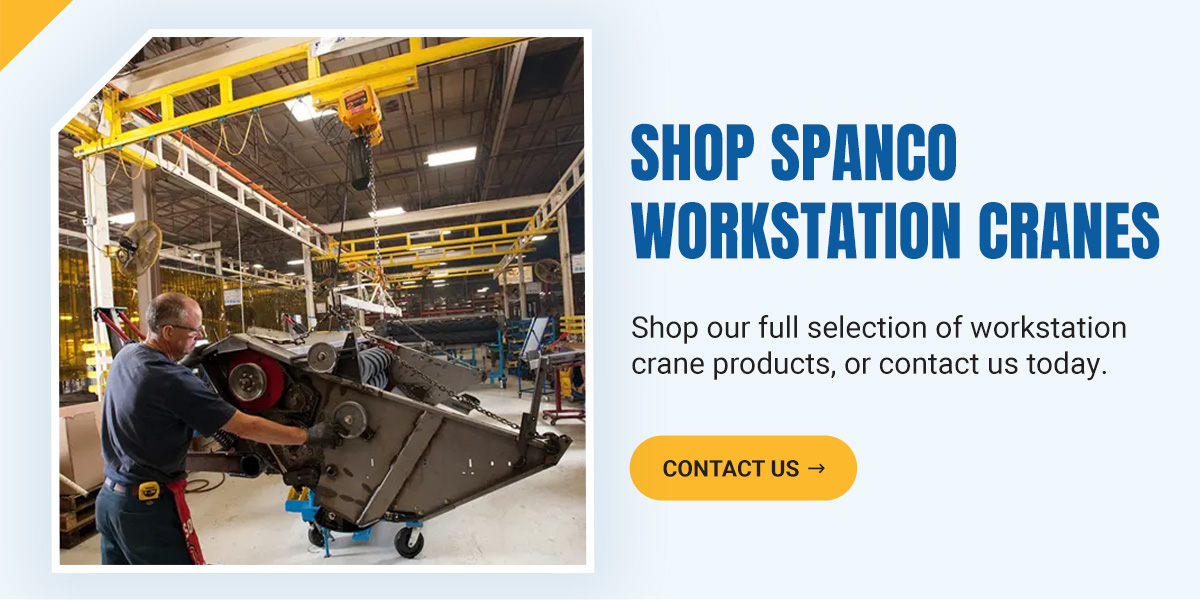
Material Handling Basics: What Is a Workstation Crane?
Ene 6, 2025
Workers in manufacturing and assembly often need a safe method to move heavy materials. Workstation cranes are an ergonomic and user-friendly solution. They are typically used to support manufacturing activities, transporting materials or components from one process to the next. Workstation cranes are used in a variety of applications to support processing and handling throughout a facility. They allow workers to move materials by hand using a hoist or other attachment.
Workstation Bridge Cranes
Bridge cranes move loads from side to side, backward, and forward, covering a rectangular area. They can be easily relocated when needed, so they are ideal for rented facilities or when workflow changes are necessary. By enabling single workers to move loads from one workstation to another, workstation bridge cranes remove the need for manual lifting. Bridge cranes are also an affordable and modular option — they can be customized to fit both large and small spaces. Use them to supplement or replace multiple pieces of equipment like jib cranes or forklifts used for material handling, and free up existing overhead cranes for larger loads.
4 Types of Workstation Cranes and Their Uses

Industries use workstation cranes for manufacturing, warehousing, automotive, aerospace, and even farming applications. This equipment reduces the strain on workers as they move heavy materials and products.
Spanco offers four kinds of workstation cranes with options for custom and pre-engineered systems:
1. Alu-Track® Workstation Bridge Cranes
These bridge cranes have aluminum tracks that reduce the system’s weight, allowing for easy bridge movement and less stress on support structures. They can cover a span of up to 17 feet and have a weight capacity ranging from 250 – 1,000 lbs. You’ll find them in refrigerated areas, clean environments, and research and development labs.
2. Ceiling-Mounted Workstation Bridge Cranes
These cranes are a cost-effective and efficient option. They don’t require a steel support and can be attached to existing trusses or beams, reducing their cost. Since they hang from the ceiling, they don’t take up space on your production floor. You can also increase the runway length, add more bridges, or connect to a monorail crane. With weight capacities from 250 to 4,000 lbs. and runway and bridge lengths of up to 40 feet, they offer ergonomic material handling for facilities that need a flexible, space-saving option.
3. Freestanding Workstation Overhead Bridge Cranes
If your facility has high ceilings, multiple ceiling heights, or overhead obstructions like skylights or air ducts, consider a freestanding workstation crane. It attaches to your facility floor and allows you to have multiple workstations. These cranes come in standard heights of 10, 12, and 14 feet, with a weight capacity of up to 4,000 lbs.
4. Headerless Workstation Bridge Cranes and Monorails
These cranes and monorails work best in shops, garages, or barns. They allow you to move heavy equipment and parts up to 1,000 lbs. safely. They are mounted to columns, fit in building corners, and can be moved to different locations if needed.
Workstation Crane Installation
There are multiple options for workstation crane installation. Figuring out which mounting style to use depends on several factors, such as possible relocation or expansion opportunities, facility space optimization, and roof beam/truss availability. Many workstation cranes can be installed as ceiling-mounted or freestanding systems:
- Freestanding workstation cranes: These systems are effective and affordable when covering a large area or needing possible relocation in the future. Independent support columns mean freestanding systems can be installed in any facility regardless of available overhead building structures.
- Ceiling-mounted workstation cranes: With this type of installation, the crane connects directly to existing support structures to use the available workspace more effectively. They provide lifting coverage without using floor space or interfering with work areas.
Depending on the system you choose, you can also add options or components, such as telescoping bridges, hanger assemblies, and box tracks.
Workstation Crane Benefits
Adding workstation cranes to your facility offers the following benefits:
- Increased worker safety: Workstation cranes are ergonomic and help minimize the risk of injuries associated with lifting and moving heavy materials.
- Improved efficiency: Workers can move products along assembly lines or load and unload materials more quickly, allowing for a smoother, faster workflow.
- Customization: Cranes can be customized to fit a facility’s specific needs and production demands.
Shop Spanco Workstation Cranes
When your business requires moving heavy materials, you want a solution that will protect your workers and your products. Workstation cranes are efficient, safe, low-maintenance, and versatile. They can support the needs of a wide variety of industries.
Spanco offers thousands of pre-engineered overhead cranes with the best warranties in the industry. Spanco workstation cranes can be fully customized to fit your company’s needs. Our cranes use enclosed track systems that are easy to operate and control. Shop our full selection of workstation crane products, or contact us today to learn more about how we can support your business.

Categories
Share this post
Contact us
Looking for the perfect fall protection equipment? Let us help!